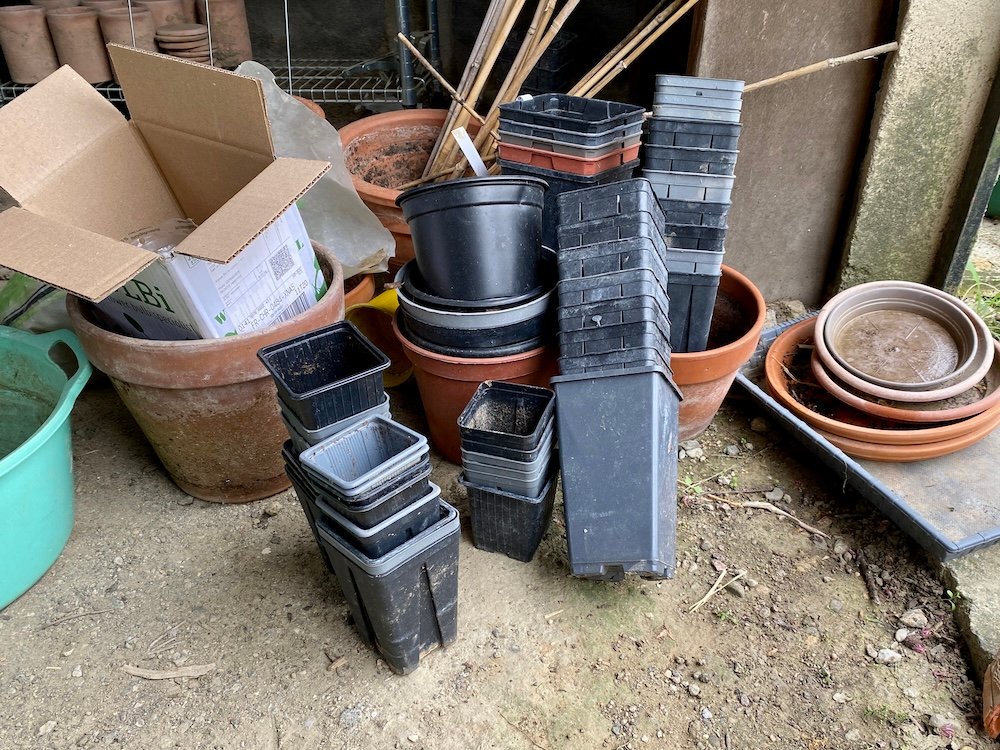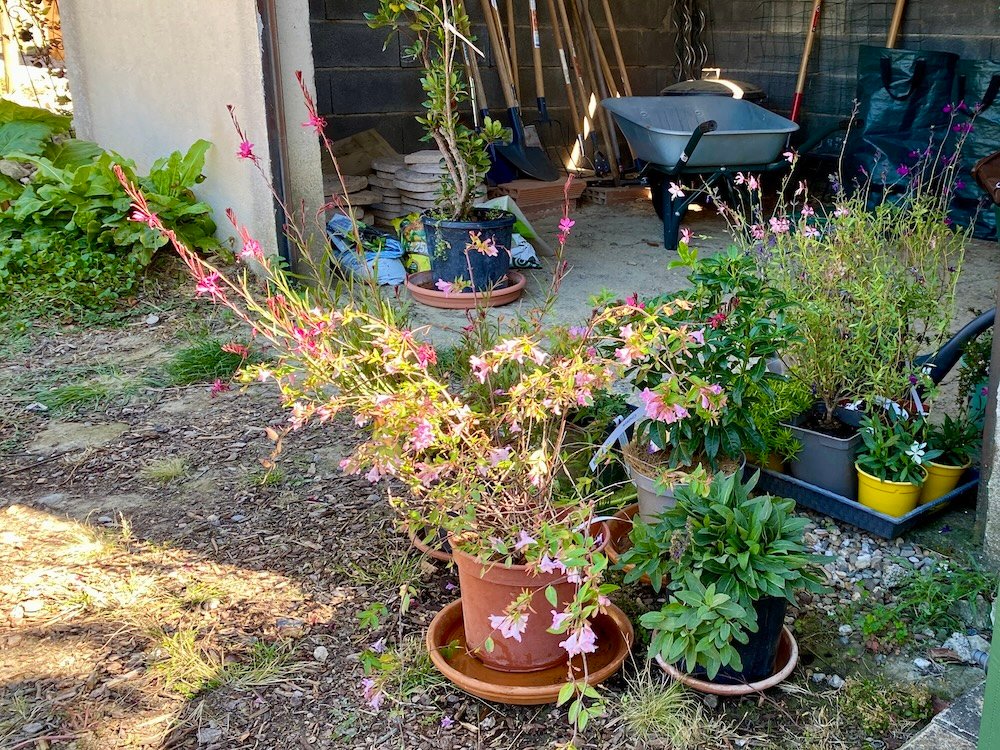Autumn is a Second Spring
Most Mediterranean gardens are a feast for the eyes from April through the beginning of June. In July and August though most plants enter summer dormancy and you don’t find many flowers or even green leaves among the perennials and shrubs. As soon as cooler temperatures begin to arrive in September and the first rains fall, a second spring begins and by October, the garden is green again, everything grows (including the weeds) and many plants begin a second flowering season.
Autumn is Main Planting Season
Of course it is perfectly possible to plant up until March or April, depending on the weather. However, autumn is a much better time for planting because plants have so much more time and ease in rooting in and establishing themselves before the sun grows hot and the soil dry again. Dividing and replanting are also best done in the fall.
For the same reason it is better to sow directly in the fall rather than in the spring. In my experience most plants sown in spring, whether in pots or directly into the garden, had a harder time growing and getting strong than plants that were sown or had reseeded themselves in the garden the year before.
New Plants, Bulbs, and Seeds 2024
This autumn I have planted and sown:
- Arbutus unedo and Punica granatum Mollar de Elche in the orchard as healthy and drought-resistant local fruit trees. “Mollar de Elche” supposedly has no or very soft seeds and sweet fruit.
- Rosa banksiae Purezza to climb over the garden shed. “Purezza” supposedly flowers throughout the year and is even lightly scented.
- Campsis capreolata to climb up the crumbling embankment. Supposedly it is quite capable of attaching itself and I hope it will cover and protect the naked soil there, where the wild vine has died off last year.
- Clematis flammula as another embankment-climbing potential. It grows all over the place in the wild, so should work in my garden as well.
- Capparis spinosa inermis into the stone-filled gabions below the embankment. That location should be dry enough for this shrub.
- Foeniculum vulgare to establish itself in front of the backyard fence.
- Choiysa dewitteana Aztec Pearl as my last stab at Choisya, after losing one completely (after watering in the summer) and having another one that just won’t grow one inch.
- Rhamnus alaternus as a food source for Cleopatra butterflies, that I saw once fluttering through the garden.
- Rosa chinensis mutabilis and sanguinea odorata as supposedly vigorous and drought tolerant roses.
- Abelia grandiflora Edward Goucher, Bupleurum fruticosum, Lonicera etrusca, Coronilla valentina glauca citrina,
- Lavandula allardii African Pride as a giant lavender bush (150 x 100 cm in flower) that flowers from spring through fall in the orchard.
- Some more lavenders like Lavandula dentata and Lavandula ginginsii for my lavender collection.
- Salvia for my Salvia collection like Salva lycioides, jamensis Violette de Loire, and chamaedroides isochroma (bright blue flowers!).
- Some Gaura lindheimeri as my last stab at Gaura, since practically all of them died the last two years and I just don’t get it after they grow like weeds everywhere else.
- Hypericum calycinum as a large ground cover.
- Perennials to fill gaps like Ballota pseudodictamnus, Santolina chamaecyparissius, Teucrium marum and ackermannii, Centaurea bella, Asphodelus fistulosus, Goniolimon speciosum, Putoria calabrica, Erodium trifolium, Glaucium flavum, Osteospermum fruticosum, Achillea umbellata, Anchusa azurea, Epilobium canum, Erica multiflora, Euphorbia rigida, Nepeta fassenii, Erigeron karvinskianus, Sedum hylotelephium Thunderhead (which has already disappeared),
- Cymbalaria muralis as a test for shady corners.
- Malephora crocea purpureocrocea, Ajania pacifica, Crassula sarcocaulis, Carpobrotus edulis, shrubby Lampranthus for the dry and poor cypress garden.
- Centranthus ruber in red as a replacement for the ones that died two years ago.
- More bulbs like Allium moly around the roses, Anemone coronaria Sylphide in pink, crocus sieberii Firefly, Gladiolus byzantinus Whistling Jack, Hyacinthoides hispanica, Ipheion, Lilium candidum, Narcissus jonquilla Pipit, Narcissus tazetta Bridal Crown, Ornithogalum ponticum Sochi, Scilla peruviana, Tulipa sylvestris, Tulipa orphanidea Flava, Tulipa cretica… Let’s hope the voles that are making their reappearance in the garden don’t discover and eat too many of them.
- I also sowed a lot of flowers directly like Antirrhinum majus Maximum Mix, Asclepias tuberosa, Daucus carota Purple Kisses, Echium vulgare, Erysimum cheirii, Linaria maroccana, Linum perenne in blue and Linum grandiflorum in red, Lobularia maritima (one of the alltime stars in a dry garden), Matricaria recutita, Papaver somniferum, Trachelium…
- Calendula officinalis in cream, Eschscholzia Californica in red and cream, and Nigella damascena because you can’t ever have too much of those in a garden.
- Myosotis sylvatica around the raspberries to protect them from diseases (supposedly)
- Phacelia tanacetifolia as green manure in the orchard.
- etc.


Leave a Reply